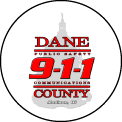

Dane County Public Safety Communications is proud to utilize Fire, Medical, and Police dispatch protocol systems certified by the International Academies of Emergency Dispatch (IAED).
The Academy began in 1988 as a standards-setting organization for the field of emergency medical dispatch. Since its inception, IAED has worked to develop and maintain dispatch protocols and curriculum for member use in response to emergency calls for help.
The original program, created more than 30 years ago by Dr. Jeff Clawson, was comprised of a set of key questions and instructions (post-dispatch and pre-arrival) for medical emergencies that dispatchers could provide over the telephone. High dispatcher compliance to a medically approved, standardized protocol was Dr. Clawson's concept for managing emergency service resources in critical patient care.
Today, this system of dispatch instruction has evolved into three separate protocols for Medical, Fire & Police. The protocols are based upon the same time-proven methods developed with over 30 years of research, testing, and quality assurance.
All Communicators and Communications Supervisors are trained and nationally certified in interrogation techniques, pre-arrival instructions, and call prioritization. The training includes techniques for airway management, bleeding control, CCR, the Heimlich maneuver, and childbirth. Communicators also receive instruction for providing help to callers in danger, for example, who may be trapped in a burning building or a sinking vehicle. These types of instructions improve safety for everyone involved while allowing for a streamlined arrival interface when help arrives at the incident location.
All training is provided by International Academies of Emergency Dispatch (IAED) instructors.
Continuing Dispatch Education (CDE) ensures that staff members remain current with procedures, updates to protocols, department policies and ever-changing technologies. CDE is accomplished through a combination of methods including on-duty training via our web portal, instructor lead in-service sessions and partnering with our various public safety partners.
We have established a comprehensive Quality Assurance program which includes the review of a random sampling of telephone calls (9-1-1 calls, emergency calls, and non-emergency calls).
The program is designed to ensure that our customers receive the highest level of service and that departmental policies, procedures, and protocols are followed.
The Quality Assurance program works in conjunction with our training team to develop continuing dispatch education programs designed to strengthen and improve the skills and the knowledge of our personnel.
Our department believes that safe and effective emergency services start with a consistent and professional emergency dispatch program. When you have an emergency, you call 9-1-1, but you should not have to wait minutes before you or a loved one is given medical attention.
The use of nationally recognized, medically-managed and locally supported protocols ensures that each 9-1-1 caller receives emergency medical care that is consistent with current standards. Communicators gather information about the problem and are able to provide instructions that have been proven to save lives. We call this a “zero-minute response time”.
For example, a person who found a suspicious package is given specific instructions for their safety and anyone else in the immediate area. Should the caller report they are trapped in a burning building, Communicators will provide potentially life-saving instructions (such as ‘don’t use the elevators’). Our goal is to prevent bad situations from becoming even worse.
The Fire, Medical, and Police Priority Dispatch Systems use a series of scripted questions designed to gather specific information to determine a priority response level as follows:
Any of the above response modes may be upgraded or downgraded as new information is received. This ensures that the Communicator processing your call is able to change the priority of the call if he or she believes, in their experience, that the situation described is much worse (or much better) than what was suggested by the system.
Public Safety Communications works collaboratively with the Dane County EMS Association, Dane County Fire Chief’s Association, and the Dane County Chiefs of Police Association to maintain open lines of communication in an effort to make sure we are providing the best possible service to the community.
Dr. Kacey Kronenfeld, MD, serves as our MPDS Medical Director. In this role, Dr. Kronenfeld provides direction in medical issues related to dispatch. She also provides training for our staff and actively participates in our Quality Assurance program.